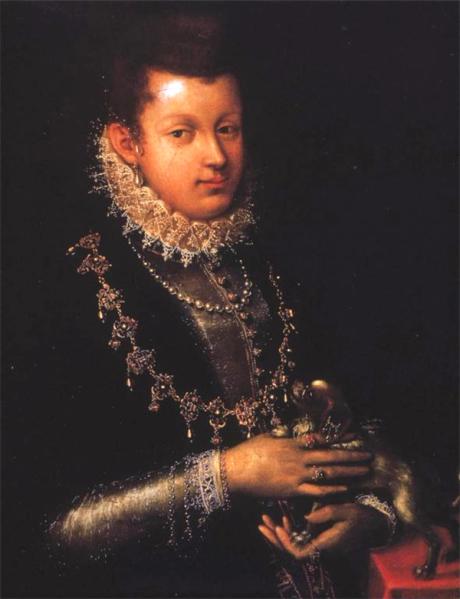
Lavinia Fontana is not only considered the first woman in Western art history to be a professional artist. The 16th century Italian painter was also adept at portraying man and woman’s best friend, showing dogs in all their glory. Some paintings from the exhibition Lavinia Fontana: pioneer, rule breaker at the National Gallery of Ireland in Dublin (until August 27) have canines as their centerpiece.
Spaniels appear in Fontana’s art, denoting prestige and status. “Little dogs look like Paris Hilton’s Chihuahuas; it’s really the same idea. They were pure props,” explains curator Aoife Brady. “They were extraordinarily expensive and the smaller they were, the more expensive they became. They often wore their own jewelry; two dogs [featured in the exhibition] are depicted wearing earrings; these items are recorded in inventories of household goods in the 16th century.
Portrait of Isabelle Ruini (1593), shows a spaniel sporting a dazzling earring, gazing sadly at his mistress. The “meticulously rendered gold jewelry” of the noblewoman matches the equally opulent jewelry of the animal, creating the impression of kindred spirits. “We have another picture of a spaniel [in the work Portrait of a Young Girl of the Gonzaga Family, late 1570s]; it’s a very obvious reference to femininity,” adds Brady. The leaping dog, eager to grab a treat, offsets the starchy formality of the buttoned-up young guardian.
This playful element also underlies Portrait of a teenager near a desk, with a dog (circa 1585-90). “There is a kind of beagle shown here. In this context, I think it is a representation of the transition from childhood to adulthood. Here is a young man about to be catapulted into the professional world. The little dog fights for his attention, but he gets no reaction from his owner,” says Brady.
The artist also highlights a female dog in another work,The visit of the Queen of Sheba to King Solomon (1599), a large and complex image depicting members of a 16th-century Italian court. “It can be identified as a kind of mastiff that was frequently seen at the Italian court. It was a kind of hunting dog. Not only is she a woman, but Fontana made sure we knew it was a woman [its teats are visible], this kind of detail was very rarely included. The solemn and majestic creature softens an otherwise intimidating tableau.
The charm of canine representations comes from the unique characteristics conferred by Fontana. “All dogs are different. We know, for example, that Fontana borrowed items such as jewelry from her clients and brought them back to the studio so she could accurately render them. People wanted it to represent their property correctly; similarly, they would have wanted their dogs to be properly represented as well,” says Brady.
“The dogs were constant because they were directly related to the people she painted. They were total status symbols. I did a technical study of Fontana’s paintings and she leaves some space, these blank areas, where she inserts the dogs last. They are key players in the compositions,” she concludes.
